Enterprise-level low-code IoT platform
The enterprise-level low-code IoT platform is an integrated platform that includes IoT (Internet of Things) device connectivity, data collection, processing, analysis, and visualization capabilities. It aims to help enterprises quickly build and deploy IoT solutions without the need to write extensive code. Below are some key features and advantages of the enterprise-level low-code IoT platform:
Key Features:
1. Device Connectivity and Management: Supports various IoT device protocols such as MQTT, HTTP, Modbus, etc., allowing users to easily connect and manage different IoT devices.
2. Data Collection and Processing: Capable of collecting data from connected devices and performing real-time processing and analysis.
3. Visualization and Reporting: Provides rich data visualization tools such as charts and dashboards to help users understand data and generate reports.
4. Low-Code Development: Using drag-and-drop components and a graphical interface, users can quickly build complex IoT applications without writing code.
5. Integration and Extension: Supports integration with other enterprise systems (such as ERP, CRM, etc.) and extends functionality through APIs and plugins.
6. Security: Offers data encryption, access control, and authentication mechanisms to ensure data security and privacy.
7. Cloud Services and Local Deployment: Supports cloud services and local deployment to meet the needs of different enterprises.
Advantages:
– Rapid Deployment: Using low-code development can significantly shorten the development cycle of IoT projects.
– Cost Reduction: Reduces programming workload, lowering labor costs and project risks.
– Easy Maintenance: Modifications and extensions can be made through a graphical interface, reducing maintenance costs.
– Improved Efficiency: Data analysis and reporting tools help enterprises make more informed decisions.
– Flexibility: Supports various devices and protocols, adapting to different IoT application scenarios.
The enterprise-level low-code IoT platform is suitable for enterprises that need to quickly build IoT solutions, such as in manufacturing, energy management, smart homes, and smart cities. Through such a platform, enterprises can manage IoT devices more efficiently, collect and analyze data, thereby improving operational efficiency and competitiveness.

Platform Overview
-
Most functions are encapsulated for the front-end and back-end, with the back-end self-encapsulated using go-restful, making it simpler to use, with clear functional logic that allows for quick learning and production use.
-
Report and Dashboard Designer: We only need to drag and drop to bind the database, complete configuration, and create reports and cool dashboards without the need for separate dashboard development.
-
Mature Rule Engine: The project uses a rule chain for data processing, simplifying development and configuration.
-
The front-end uses VUE 3.0 + TypeScript + vite 3 + Element-plus: PandaUI, adapting to mobile, tablet, and PC with built-in various UI functions to reduce development workload.
-
Efficient development: The code generator can generate front-end and back-end code with one click, allowing online code previews and reducing code development workload.
-
Comprehensive Permission Authentication System: A complete permission authentication system, including menu button permissions, API permissions, and organizational permissions.
-
Multiple Databases: The project supports MySQL, PostgreSQL, and other databases according to specific needs.
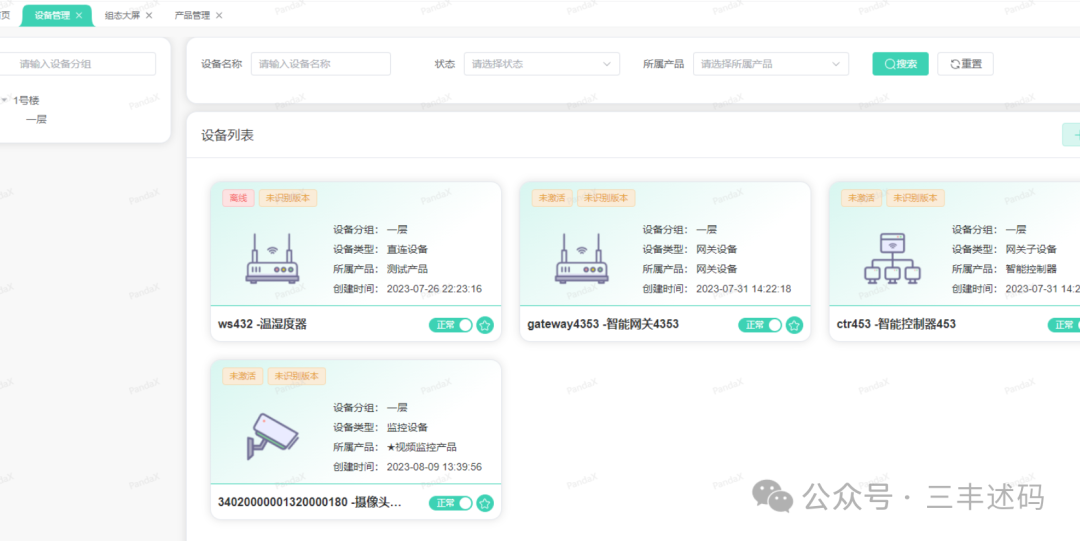


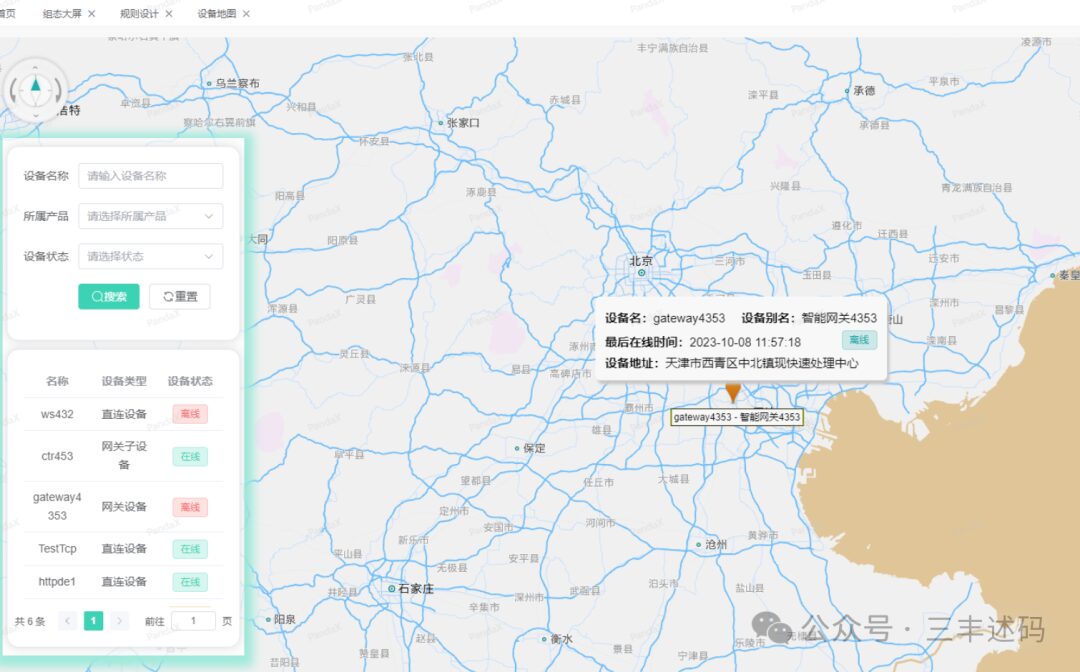
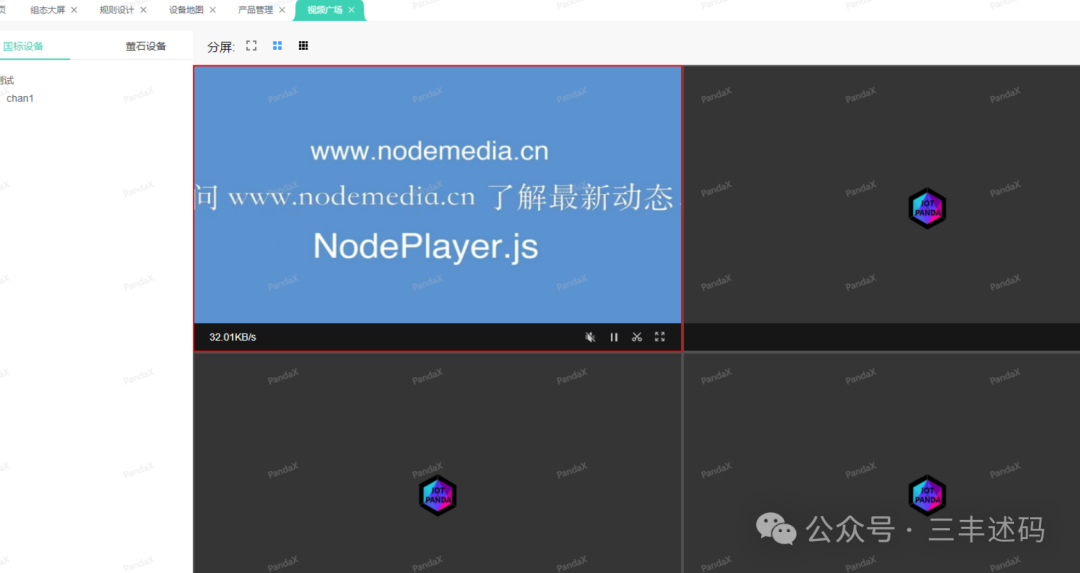
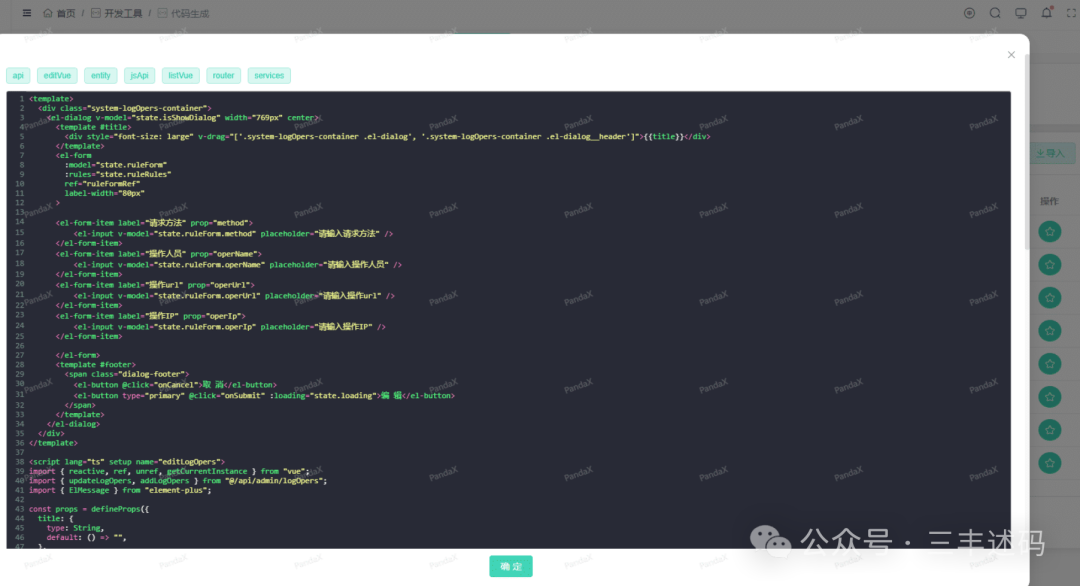
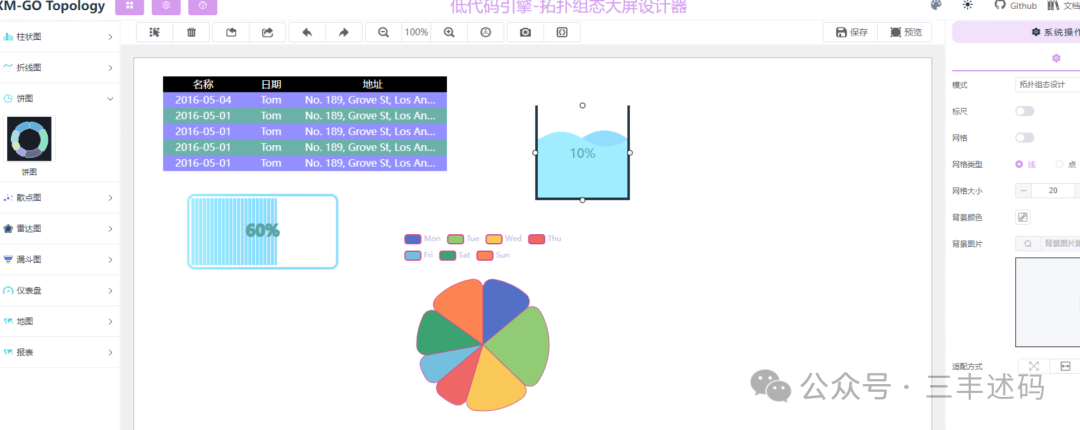
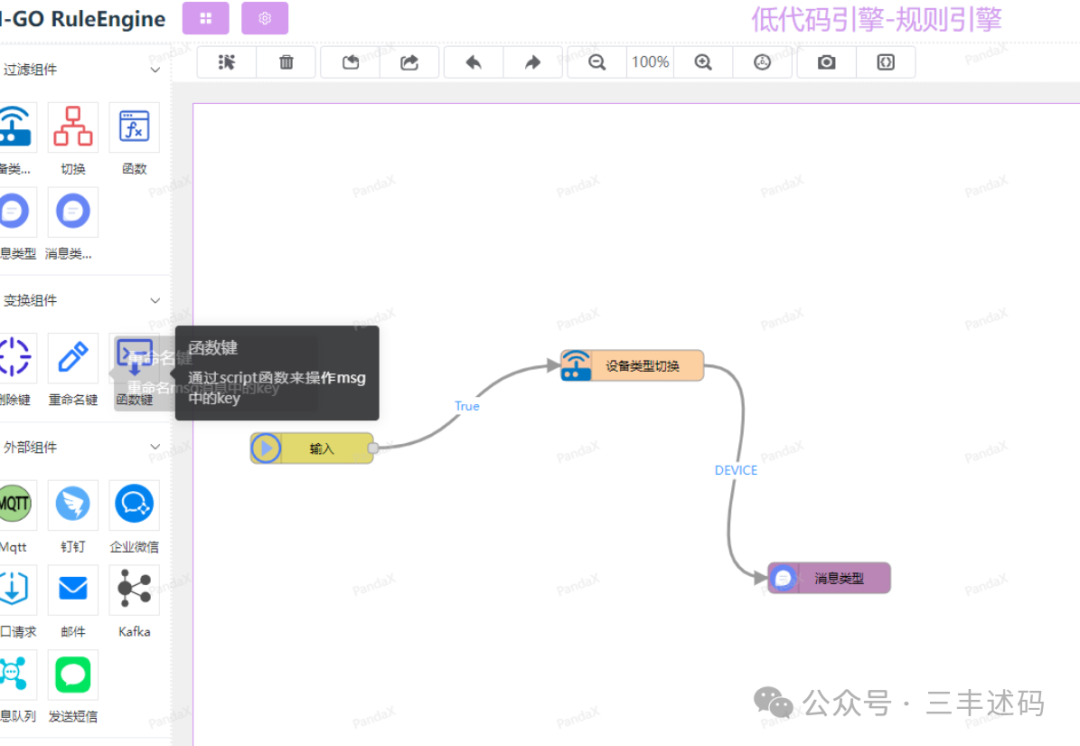
Features
The PandaX enterprise-level IoT platform rapid development framework is a framework that provides efficient tools and services for IoT application development. Such a framework typically integrates various functions to simplify the IoT project development process. Below are some possible features:
1. Device Connectivity and Management:
– Supports various IoT protocols such as MQTT, CoAP, HTTP, etc.
– Provides device auto-discovery and auto-registration features.
– Device configuration and remote management capabilities.
2. Data Collection and Processing:
– Real-time data collection and processing.
– Data filtering, transformation, and aggregation.
– Data storage and caching mechanisms.
3. Data Visualization and Analysis:
– Real-time data display and monitoring.
– Historical data analysis and trend forecasting.
– Visualization tools such as dashboards and charts.
4. Low-Code/No-Code Development:
– Drag-and-drop components and graphical interface.
– Predefined templates and component libraries.
– Build IoT applications without writing code.
5. Integration and Extension:
– Supports integration with other enterprise systems (such as ERP, CRM, etc.).
– Extends functionality through APIs and plugins.
– Supports various data storage and processing services.
6. Security and Compliance:
– Data encryption and transmission security.
– Access control and authentication mechanisms.
– Compliance with industry standards and regulatory requirements.
7. Cloud Services and Local Deployment:
– Supports cloud service and local deployment options.
– Elastic scaling and resource optimization.
8. Mobile and Desktop Application Support:
– Provides mobile and desktop application development frameworks.
– Cross-platform compatibility.
9. Project Management Tools:
– Task assignment and progress tracking.
– Team collaboration and communication tools.
10. Documentation and Training:
– Detailed documentation and user guides.
– Online training and community support.
The specific features of the PandaX enterprise-level IoT platform rapid development framework may vary based on different versions and updates.
Open Source Address
Follow the public account and reply 20240725 to obtainYou might also like:
Open Source Educational System for Supporting Millions of Users in Online Education
An AI-Powered Programming Assistant Designed to Help Developers Improve Efficiency, Reduce Errors, and Accelerate Development
Open Source Visual Drag-and-Drop Programming, Auto-Generating Projects, Auto-Generating Code, Importing Third-Party Components
Next-Generation Crawling Platform that Defines Crawling Processes Graphically Without Writing Code
Open Source Professional Workflow Engine Based on Flowable with Front and Back-End Code Included
Add WeChat to join relevant discussion groups,
Note “Microservices” to join the microservices discussion group
Note “Low-Code” to join the low-code discussion group
Note “AI” to join the AI Big Data and Data Governance discussion group
Note “Digital” to join the IoT and Digital Twin discussion group
Note “Security” to join the security-related discussion group
Note “Automation” to join the automation operation and maintenance discussion group
Note “Trial” to apply for product trials
Note “Channel” for cooperation channel information
Note “Customization” for project customization, full source code delivery
